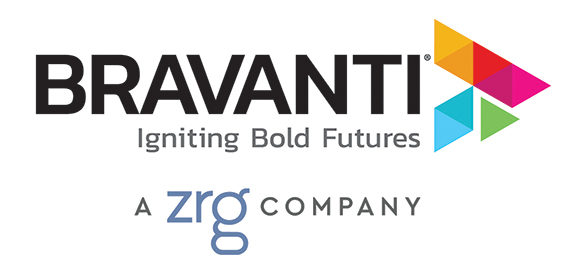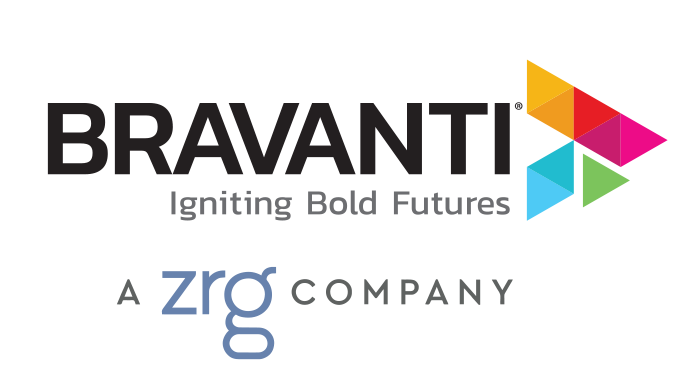By Bravanti
In just three short years, we have experienced a series of “once in a decade” global events, leaving no business—or talent strategy—unaffected. These high-impact events continue to take place, seemingly with more frequency and greater consequences.
And now, after a turbulent start to the decade, we’re faced with the growing potential threat of a global recession in the next 6-12 months.
But as the saying goes, with change comes ample opportunity. The events of the last three years have helped (albeit forcefully) organizations to become more agile, innovative, and responsive to the world around them. And while the topic of change management has been around for decades, the events of recent years have pushed organizations to embrace change on a whole new level. Today, it’s a minimum requirement for business continuity; we must expect the unpredictable and prepare for the unknown.
How you prepare for the unknown must evolve to be more flexible, creative, and socially conscious than in years past. The silver lining to this is that we now have a plethora of lessons learned that can inform our paths forward.
We’ve gathered some of these learnings to outline eight ways you can recession proof your talent strategy in 2023.
Rethink the Role of HR in Organizational Strategy
Human resources is a function that directly supports and enables every other function in your organization. It oversees the hiring, onboarding, development, and transitioning of your most valuable resource: your people.
Every business decision triggers a consequence for the people component of your organization — including the need for additional or different training, increased hiring, leadership pipeline development, succession planning, workforce restructuring, hiring freezes, internal communications planning, etc. Odds are that if a business decision is made, HR will play an integral role in seeing it through successfully.
It’s this role that makes HR more than just a department or function—it’s the very heart of your organization. And as such, HR must be viewed as an intrinsic partner in shaping and defining your organizational strategy.
When Times Get Tough, Get Creative
Difficult times can lead to fear-based decision-making that acquiesces to the status quo. In contrast, contingency planning ahead of time allows you to get creative with your talent solutions.
In addition to internal mobility (more on that below), job sharing can be an alternative to layoffs and furloughs. This solution allows two part-time employees to fulfill the responsibilities of a single, full-time role, saving costs while keeping talent employed and ready to resume their full-time roles once circumstances improve.
Another creative alternative to layoffs and furloughs are secondments, where organizations temporarily “loan” an employee to another department or company. Secondments are a great talent management strategy in good times or bad, and during a downturn it helps to fill talent needs elsewhere and, if sending the employee to another organization, helps to cover costs.
Regardless of the alternatives you choose, put your efforts into thinking outside the box to avoid defaulting to ineffective solutions from the past.
Develop Strong Communication Lines Between All Departments and HR
As we’ve seen in the last few years, market conditions can change on a dime, giving businesses little time to acclimate and act. When these inevitable events occur, strong communication lines between HR and rest of the organization are essential to change management and business continuity.
The sooner HR is made aware of potential changes in labor needs, the better it can coordinate and execute a strategically aligned plan. Develop or update your standard operating procedures for reporting changing talent needs to HR. This can include monthly or quarterly meetings between department heads and HR to discuss looming threats or opportunities and potential action plans to mitigate contingencies.
Invest in Learning & Development
Previous economic downturns have revealed that tough times are not the time to start cutting your L&D budget—it’s the time to double down.
Studies show a clear, direct correlation between professional development and employee morale. As we’ve said before, learning and development is motivation and engagement during difficult times. And the data proves that when the chips are down, high employee morale and a healthy company culture can be the single biggest deciding factor in failure versus success.
So, instead of cutting your L&D budget, tie your learning and development initiatives to your 2023 organizational goals. This will ensure that your continued investment isn’t arbitrary and is directly supporting and enabling your 2023 success.
Lean into Your Wellbeing Initiatives
Similar to L&D, employee wellness initiatives are not a resource you want to skimp on during a recession. As discussed in the previous section, keeping morale high is critical to maintaining or even improving performance during difficult times. However, we realize that some elements of morale are largely out of an employer’s control. Personal financial challenges, job security concerns, and unavoidable workplace changes are just a few of the factors that can negatively impact employee morale.
By maintaining a top-down focus on wellbeing, your organization can help to mitigate some of these factors. In addition to providing mental health resources and benefits, focus on workplace culture. Establish open and candid communication, creating a forum for employees to express their challenges and concerns. This effort often goes a long way in and of itself.
Integrate Talent Mobility into Your Talent Strategy
Talent mobility, also called ‘internal mobility’, ‘career mobility’, or ‘redeployment’, is a Swiss Army knife in your talent management strategy. In tight talent markets, talent mobility helps to fill vacant positions, attract top talent looking for career advancement opportunities, and reduces talent acquisition costs by hiring from your existing talent pool.
In economic downturns, it can be used to redeploy talent as an alternative to layoffs or furloughs. Talent mobility also increases workforce agility, creating depth in your talent pool through new experiences while further integrating top talent into the organization.
Consider how you can integrate talent mobility into your 2023 strategy, and not just as a contingency plan. It’s a valuable initiative, regardless of your circumstances.
Invest in Reskilling & Upskilling Your Employees
Workforce reductions during recessions may solve the need for cost-cutting, but it can create additional issues with skills and labor shortages. And it’s often the case that not all areas of a business need workforce reduction—in some cases, additional support may be needed in other functions or departments. In these instances, talent mobility is a great solution—but if you haven’t upskilled or reskilled your at-risk employees, you may not be in a position to implement it.
A proactive approach to this is to start investing in upskilling and reskilling before issues arise. Focus on the employees in roles that are at higher risk of layoffs and furloughs and identify ways they can be trained for redeployment. Even if you manage to avoid workforce reductions, you now have a pool of employees with a greater set of skills and who feel valued as a team member through your efforts to keep them employed.
Decide How You Will Manage Workforce Reductions Ahead of Time
In the event that your organization is forced to initiate layoffs or furloughs in 2023, having a plan in place can help to avoid hasty decision-making and sub-optimal outcomes during stressful times.
Use scenario thinking to outline potential needs and impact areas. Then consider how you would move forward in the most likely scenarios. Will you partner with an outplacement provider to facilitate the transition? If so, what criteria will you look for in a partner? Identifying an outplacement partner (or at least a shortlist of potential partners) ahead of time can accelerate and ease the decision-making process if/when the need arises.
Next, outline a change communication strategy for employees and the public, a critical step in creating a positive experience for exiting employees while maintaining your employer brand. When communications are handled poorly, it can tarnish your reputation for years to come.
For more ways to ease the transition process for outgoing employees, our article How to Provide Employee Transition Support While Downsizing is a great resource.
Building Your Recession-Proof 2023 Talent Strategy
While we hope for the best, it’s important to proactively prepare for the worst these days. Building a recession-proof talent strategy can help you prepare for whatever may come, positioning your organization to meet challenges head-on and thrive during difficult times.
Interested to discuss more ways you can recession proof your 2023 talent strategy? Book a complimentary consultation today! [link to CT consultation booking]
Content Related to Recession Proof Your 2023 Talent Strategy
5 Ways HR Can Impact Business Strategy

